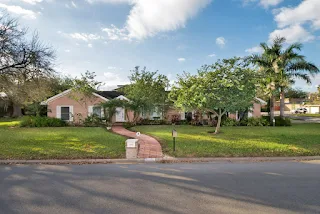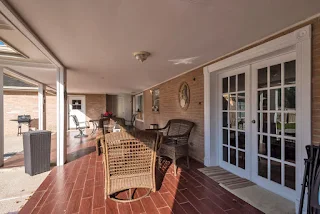By: Mike
Otranto at OtrantoRealEstat
It is no secret that a well located,
reasonably priced real estate investment can effectively generate more revenue
than the cost of the money used to finance it.
Many who have held on to single
family homes in good areas, for 10 years or more, have built up substantial
amounts of equity, and a lot of savings.
Before deciding to write this
article, I did some research online, but was unable to find a concise
explanation for “how a single-family rental property makes money”.
To answer this question, I think
it helps to simply think of a stool with 4 legs.
- Cash Flow
- Amortization
- Appreciation
- Tax Benefits
Let’s look at each of these legs in
a little more detail.
#1 Cash Flow
The main way a rental property can
make money is through cash flow. Simply put, this is the difference
between the rent collected and all operating expenses.
For example, let’s say you buy a
house for $200,000 and rent it for $1,500 per month. If you get a great
interest rate and put down a healthy down payment, your “PITI” (Principle,
Interest, Taxes, and Insurance) would be about $985 per month. This leaves you
with a $515 difference between the rent you collect and the monthly “PITI”
payment.
Is it really that simple? Of course
not! To understand how much money we're ACTUALLY making here, we need to talk
about something called Net Operating Income.
What is Net Operating Income?
Net Operating Income (NOI) is the
rent you collect, minus all operating expenses. The most common
operating expenses are:
- Vacancy (when your property sits empty)
- Repairs (when your property needs fixing)
- Management fees (for finding/evicting tenants and paying attention to the details)
- Delinquency (when tenants pay late, or stop paying altogether)
To calculate Net Operating Income,
we can multiply the monthly rent by 12 ($1,500 x 12) = $18,000; this is often
referred to as Gross Scheduled Rent.
Now let’s look at the expenses.
Vacancy
Allowance
Vacancy is the time in-between
tenants. When one tenant moves out, the property must be “turned over” into
rent-ready condition. You'll have to recognize that no rent will be collected
during this period, and as such, you need to realistically budget for lost
rent. To be conservative, I like to assume that my property will sit vacant
for one full month out of the year.
So let's deduct one month's rent of
$1,500 from our Gross Scheduled Rent above.
$18,000 – $1,500 = $16,500
Repairs
These are the day to day maintenance
items such as, faucets, appliances, doors, locks, light fixtures, HVAC repair,
etc. This amount can vary depending on the size and age of the property, but as
an average, a decent benchmark for a newer home in good condition is about
$2,000 per year.
Let’s deduct another $2,000 from our
Gross Scheduled Rent.
$18,000 – $1,500 – $2,000 = $14,500
Management
fees
Unlike vacancy and repairs, this is
a discretionary expense. You are not required to hire a property manager, however
– somebody will have to manage every property you own (even if it's YOU), so
it's wise to acknowledge this very real cost.
I like to manage my own properties,
so I'm not paying this money out to a third party property Management Company –
but I have a lot of experience, and I do pay the price in my time.
You must decide for yourself if you
want to go it alone or hire a manager. Many property management companies will
charge about 10% of the gross rent ($18,000 x 10%) = $1,800.
Let’s deduct another $1,800 from the
GSR.
$18,000 – $1,500 – $2,000 – $1,800 =
$12,700
Delinquency
This cost is a little harder to
predict when compared with vacancy and repairs. Assuming you are buying a good
house in a good area of town, and your tenants are being screened properly this
should not be an issue. However, even the best screening process won't make a
landlord immune to the occasional delinquent tenant. Things happen – so
let’s budget for 2% of the gross rent ($18,000 x 2%) = $360
Let’s knock off another $360 from
our gross rent for the year.
$18,000 – $1,500 – $2,000 – $1,800 –
$360 = $12,340
As you can see above, your Net
Operating Income is the Gross Scheduled Rent subtracted by all operating
expenses (and keep in mind, the mortgage is not part of this calculation).
Mortgage
(PITI)
The Principal, Interest, Taxes and
Insurance payment (or “PITI” for short) will be your greatest expense and will
include the total amount of Principle, Interest, Taxes, and Insurance for the
year.
Now let’s look at the numbers…
After these expenses, you will have
$520 profit for the year – which isn't a lot of money.
However, it's important to
recognize, if you had a management company doing all the leg work, this would
be passive income that required virtually no time or work from you.
Also, assuming rent prices rise as
time goes on, your gross rents will increase while your principle and interest
payments remain the same.
Ending the year with $2,320 isn't a
bad deal (assuming you didn't put a huge amount of your time into managing the
property), but what else do you get for your investment?
#2 Amortization (Principle Pay Down)
With every monthly payment made
toward your loan, a portion of that payment goes to pay down the principle
amount owed on the property.
The key point to remember here is
that you will be paying down your mortgage with someone else’s money
(the rent you get from your tenant).
If you've ever looked at how a
30-year fixed mortgage is calculated, you'll see that with every year that goes
by, you pay down progressively more principle than the previous year. This
means you are building equity (the difference between the value of the property
and the principle balance of the loan) each year with someone else’s money.
The specifics of how mortgages pay
down is another subject – for now, all you have to remember is that every time
a rent payment comes in, a progressively larger portion of your Principle &
Interest payment goes toward paying down your mortgage, which effectively build
up your equity with your tenant's money.
As you can see in chart 1 below, you
would be paying off $3,166.56 of principle in year 1, effectively increasing
your net worth (all your assets minus your liabilities) by a little over
$3,000.
Again, not a lot of money—I get it!
But remember, buying and holding
real estate is a long-term strategy. Let’s look at things around the 5th
year.
As you can see above, at the end of
the 5th year you have added an additional $17K to your net worth,
and you have done so with the rent from your tenant.
Appreciation
The average appreciation rate for
homes is heavily dependent on local factors as well as some booms and busts of
the U.S. economy. Zillow gives an estimate of 3% – 5% annually, depending on
local factors and Appreciation is the increase in the value of an asset over
time.
In Wake County, North Carolina,
where I currently invest, we have experienced some of the most competitive
appreciation rates in the area. The average appreciation rate in Raleigh between
2016 and 2017 is 5%.
To avoid getting mired down in
complicated economic data, I like to be conservative in assuming a good house
in a good area will appreciate on average of 1% per year.
Why
does the value of a home appreciate?
Home appreciation isn't always a
guaranteed thing – so it helps to start with an understanding of why
appreciation happens in the first place.
Fixed
Supply
There is a fixed supply of land to
put houses on in the United States. The increase in population gradually
increases the demand – and with a fixed supply of land, this will naturally
drive up the price.
Population
Growth
The United States has seen a steady
increase in population over time. More people means more roofs are required to
house them.
In July 2015, Wake County was listed
as one of the fastest growing counties in the country. According to the Wake
County Demographics Study, Raleigh is growing at a rate of 14% per year. This
surge in population increases the demand for housing which increases the price.
Do your research on local appreciation rates in your city and state. Many
counties like Wake County NC, will publish demographics data that they share
with the public. Zillow.com is another good resource for average appreciation rates
in local areas.
Equity
Amortization and appreciation
contribute to profit by virtue of another concept called equity. Equity is
defined as the difference between the value of an asset and any debt on it.
When we combine appreciation with
the gradual paying down of the principle balance of the loan (amortization), we
are left with the equity.
Look at the chart below.
As you can see, the amount of equity
in the property 5 years after purchase, assuming a 30-year amortization
schedule and 1% per year appreciation, is $47,898. As an owner of rental
property, your net worth would now be almost $48,000 higher due to your
investment decision.
Tax Benefits
Real estate offers some of the most
generous tax advantages of the asset classes. Rental properties can be
depreciated each year to offset any cash flow, and all maintenance and expenses
can be deducted against any profits received.
Remember the $5,700 in mortgage
interest that you paid the first year? All of it is tax deductible. So,
any cash flow you made at the end of the first year, whether it be $500+
(managed by a professional company), or $2,000+ (if managed yourself) would be
offset by the mortgage interest that you paid. You also have the option to
deduct that mortgage interest against any personal income you made that year.
There is another benefit called depreciation.
Basically, you can depreciate the fixtures of the house to offset any income
that you have. Even though you don't literally have to pay out of your cash
reserves to pay for this expense, the IRS will allow you to count this as an
expense all the same, because they recognize that all physical assets will
eventually wear out.
1031 Exchange
Remember the $47,000 in equity at year five? If you decided to sell the property, you could use a 1031 Exchange to defer paying any taxes on that money so long as you use it for another investment property. There are other criteria that must be met that we will not be addressed here.Books have been written on this subject and this article is meant to be a brief overview. Hopefully, you can see that owning rental property, when held for the long term, can be a very profitable and low risk investment strategy.
While it can be difficult to get a single-family home to show cash flow when bought for “retail” price (the example used in this article assumes that the property was bought at a substantial discount), it is possible when using an effective marketing approach.
Give Jinks Realty a call at (956) 429-3232 for All your Real Estate needs.





















































